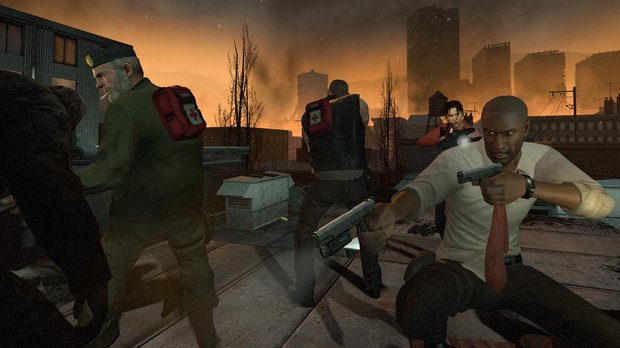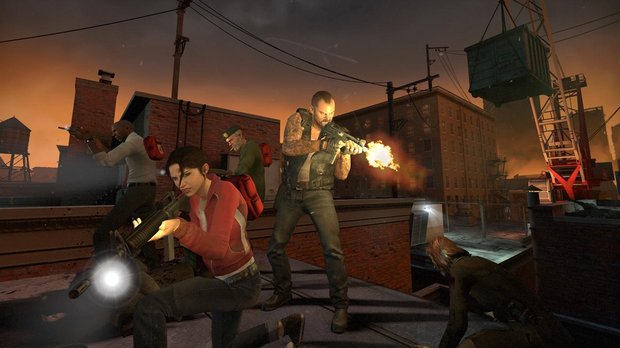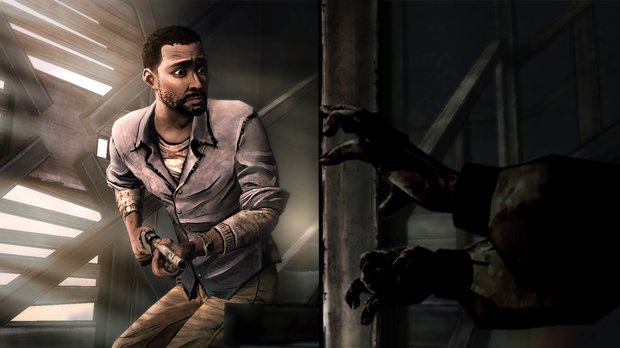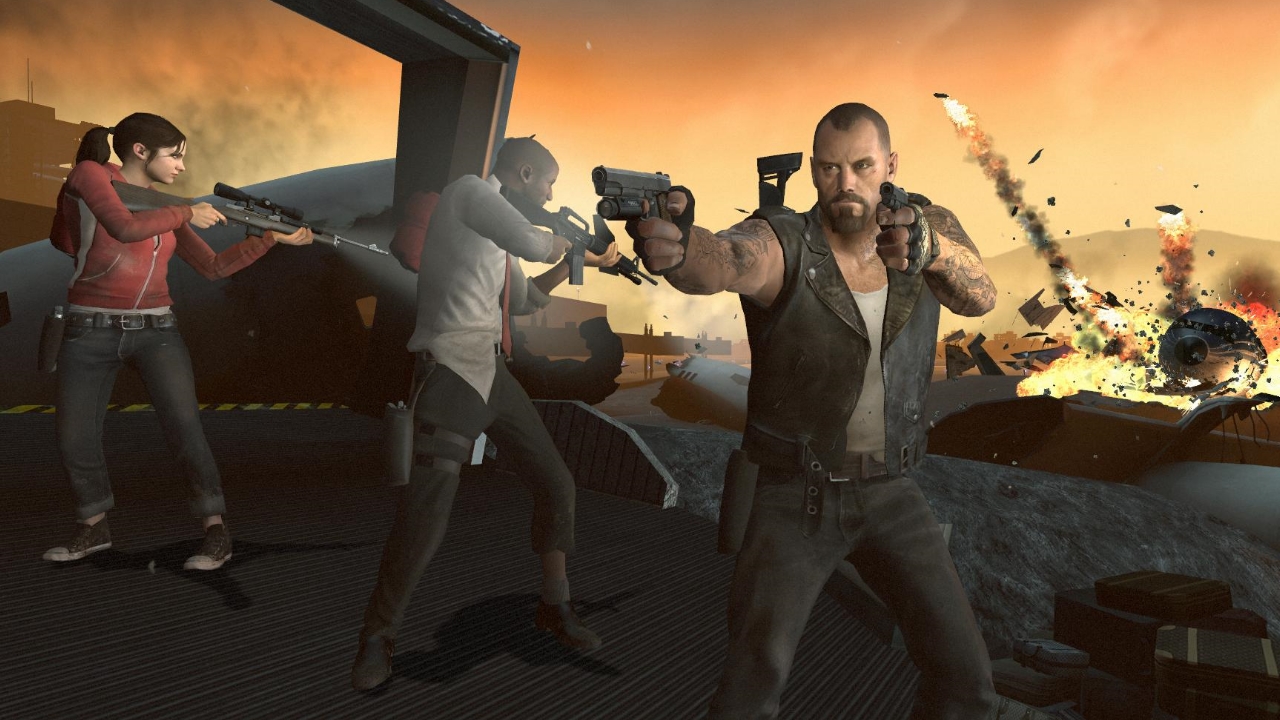Forget Half-Life 3, I need a Left 4 Dead resurrection
One of the horror genre’s oldest rules of thumb is “don’t show people the monster”, because there’s nothing more unnerving than the devil you don’t know. Dreamt up by Turtle Rock and brought hideously to life with Valve's aid, the masterful Left 4 Dead takes that principle in an intriguing direction. Its most abysmal foe is no shambling corpse or bloated, oozing mutant but the “AI director”, a malevolent clump of code that reads each player’s emotional state via metrics such as accuracy or group cohesion, and uses these insights to decide where and when threats will appear.

Invisible, all-seeing and all-powerful, the director is a weight on your mind throughout each chapter, however reassuring your surroundings, and however hale and hearty your gang of gun-toting human Survivors may be. This is a brilliant gambit not just because the result is a ferociously unpredictable co-op game, perfect for frequent play. It also demonstrates how interactive art can reinvigorate conventions beloved of older media, by taking well-worn devices - the rasp of violin strings when something ghastly squelches out of a sideroom, the miraculous yet expected discovery of a shotgun in a basement - and reorganising them on the fly.
In terms of the blow by blow of combat and survival, Left 4 Dead is frustrating to write about because its moving parts are so cleanly and cleverly meshed that they’re hard to analyse in isolation. The temptation is to bumble off on a series of anecdotes, rather than dissect the mechanisms that give rise to them - that time everybody found themselves dangling off the same rooftop by their fingertips, for instance, or that time a lone Survivor made it all the way to a campaign’s end, only for a rogue Smoker to snatch her up as she ran for the helipad.
It’s also a game that manages the trick of amassing complexity and variety around simple concepts, without diluting their charm. Take the four Special infected, playable in the game’s competitive multiplayer. Each handles in a unique way - the Hunter is a hyperactive panther in a hoodie, the Tank a rotting Hulk - but they’re all meditations on the same core function: separate the human players from each other as they move through the level, then pick off them off one by one. The Boomer causes Survivors to scatter for fear of being showered in zombie-attracting stomach acids. The Hunter is there to ambush gung-ho types and those who make a desperate break for the exit. The Smoker’s job is abduct Survivors during bigger brawls, suffocating them while friends are busy fending off the horde. And the Tank’s role is to soak up precious bullets and smash people out of formation so that other Specials can run them down.

The exception to the divide-and-conquer rule is the Witch, a sadistically zero-sum piece of enemy design (thankfully not playable in PvP) who appears near building entrances or mid-corridor, sobbing hysterically. Stray too close, and she’ll cut you to pieces in a heartbeat. This naturally entails a drop in tempo, as you tiptoe along the wall one by one, or cautiously nose around for side-routes - and while you’re picking your way past, the Director may be sneaking up behind you with an army of common infected. It’s a magnificent interweaving of priorities and pressures.
You could argue that Left 4 Dead is all the zombie game you’d ever need: the Director’s underhandedness, together with the choice of strategies afforded by the layouts and each special Infected’s abilities, make for a co-op shooter that still feels fresh after your hundredth playthrough. Excellent though it proved, the second game wasn’t able to build on the formula in a revolutionary fashion. Nevertheless, I’d absolutely love to play the long-rumoured threequel, which is reportedly in development for the next generation of Valve’s Source engine.
For one thing, the zombie genre at large has progressed since Turtle Rock’s game hit shelves in ways that might benefit from the AI Director’s attention - it came out before The Walking Dead TV series, before Telltale’s video game adaptations of the same property, and before the mighty DayZ. There’s something to be said for a change of backdrop, too: a Left 4 Dead that takes place in a picturesque European city, perhaps. I don’t know about you, but the idea of whisking the arms off a pugnacious stiff while roving the cobbled streets of Cologne has a certain appeal.
Sign up to the GamesRadar+ Newsletter
Weekly digests, tales from the communities you love, and more

Beyond that, we need Left 4 Dead back because there’s still nothing on offer that scratches quite the same itch, as abundant as wave-based zombie survival modes have become. I’d say we need a new Left 4 Dead more, even, than Valve’s other hotly coveted sequel, the borderline imaginary Half-Life 3. Many a first-person odyssey has riffed on Half-Life’s level design, toolset and narrative beats, from Bioshock, through the Thief, series to Metro and even Halo. By contrast, Left 4 Dead’s only real imitator (the upcoming HUNT: Horrors of the Gilded Age aside) is Turtle Rock’s spiritual successor Evolve, a predatorial offworld adventure of huge ambition and richness that never quite coalesces into something amazing.
Perhaps above all, Left 4 Dead deserves resurrection because, as frantic and unhinged as the action can be, it’s also one of the most layman-friendly games ever made - an emissary of sorts to the world beyond our industry. That reliance on shlocky cliche means that even a total game-o-phobe can work out what’s going on, given a passing familiarity with B-movies - one of my sisters, a resolute non-gamer, used to watch as my brother and I put the Survivors through their paces, laughing along with us when we fell victim to the game’s machinations. It’s rare to come across a title that straddles the gap between industries and disciplines this smartly, at once revelling in the legacy of cinema while making a case for the video game as an artform.

It’s this balance between brains, depth, possibility and accessibility that makes Left 4 Dead so important. With Evolve both simplifying and over-complicating things - focusing down the threat, while replacing the immaculate Director with unreliable human intelligence and a good deal of random environmental hazards - and zombie co-op in games now represented largely by a, well, horde of identikit horde modes, we need Left 4 Dead back.
We need it back to remind us just how special undead survival really can be in the right hands, and hell, to remind us just how special the hands at Turtle Rock and/or Valve can be. In order to justify its existence, Half-Life 3 needs to evolve the FPS in the same way that its predecessor did. That’s an almost unattainable goal, and certainly a very long-term development prospect if it even is possible. Revitalising the half-dead corpse of one of gaming’s finest co-op campaigns though, for a generation now obsessed with zombies, survival, and connected worlds? That resurrection is all too possible.



